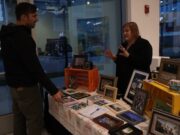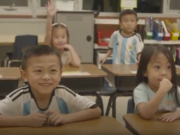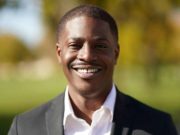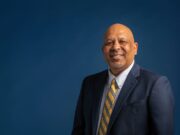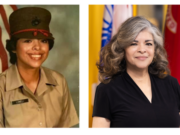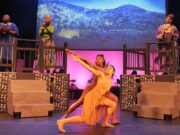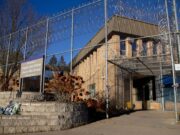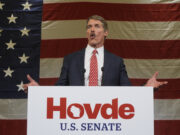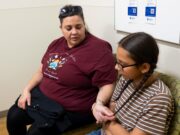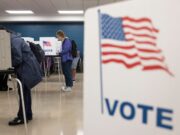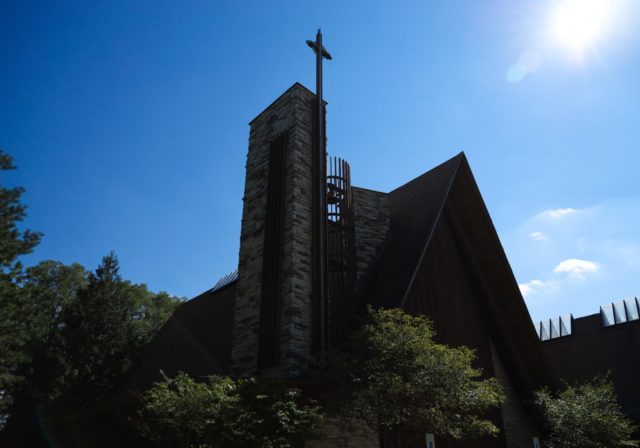We’re looking back at our favorite stories of 2022, including this one from reporter Isaac Trussoni on one Madison church’s idea to pay for the use of Ho Chunk land.
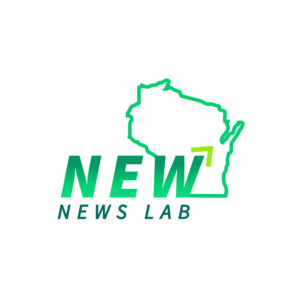
The history of Indigenous peoples in Wisconsin is deep and abundant, yet it’s a history that has long gone glossed over without proper attention or, in many cases, unacknowledged completely.
St. Dunstan’s Episcopal Church on Madison’s west side is looking to push against narratives of erasure by giving back through adding a new voluntary land tax into their budget for the year.
“We came to this plan after a few years of learning and discerning, and several months of working on what we called the Land Acknowledgement Task Force,” said the Rev. Dr. Miranda Hassett, rector of St. Dunstan’s. “We started researching to understand how the land that the church stands on came to be the church’s land. We had a real conviction from early on in the conversation that we didn’t feel comfortable just having a spoken land acknowledgment or printed land acknowledgment. We felt like that needed to be accompanied by some restorative actions. Taking some actions to kind of make amends, and move toward restoring wholeness and being better allies, even in small ways.”
She said the idea to pay a tax came after she discovered that some tribes in the Pacific Northwest have a system set up for anyone who wishes to make voluntary payments, or tax, to the Indigenous nation that the land was taken from.
After learning more about the history of the Ho-Chunk people around the Madison area and the ways in which they were dislocated or forcibly removed, Hassett brought the idea to her parish’s Land Acknowledgement Task Force to do something more than just say the land once belonged to the Ho-Chunk Nation.
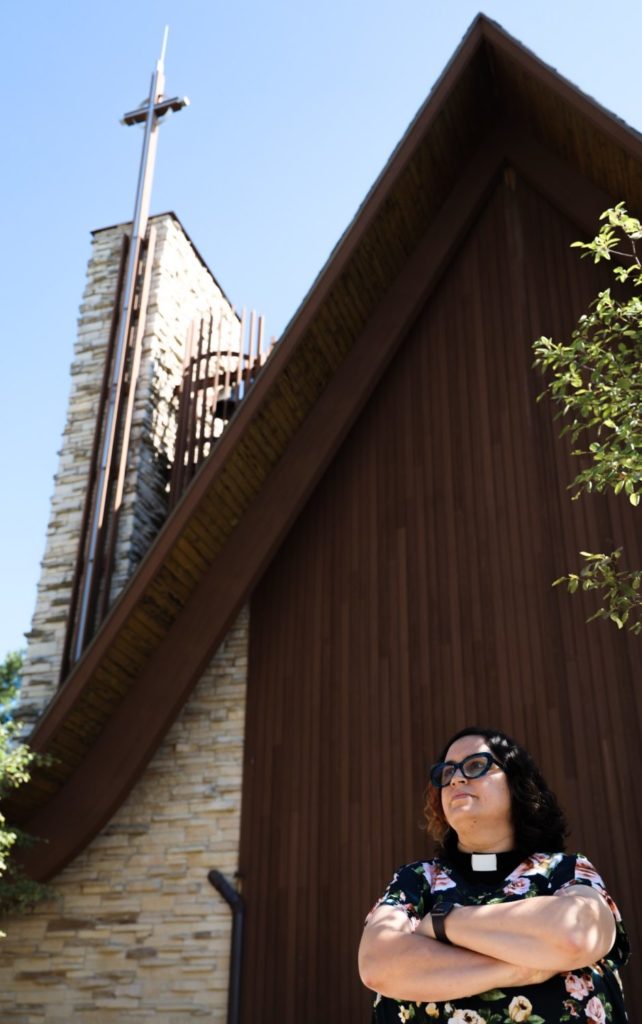
“Our understanding is that the land where the church actually stands was historically Ho-Chunk land. We’re pretty close to a historic Ho-Chunk village, in a part of the southwestern corner of Lake Mendota,” she said. “That was part of the territory that was ceded in the 1832 Treaty that dislocated and removed the Ho-Chunk, so our initial thought was to make a gift to the Ho-Chunk tribe.”
Hassett’s next call was to the Rev. Kerri Parker, executive director of the Wisconsin Council of Churches (WCC). St. Dunstan’s is a member of the WCC, and Hassett thought the effort could benefit from collaboration. As an organization with 75 years of history that connects 21 different Christian traditions across the state, the WCC is no stranger to facilitating solutions to modern social issues.
“Every few years the work that we do changes as the work there is to do together in the state changes, as church and society change,” Parker said. “What doesn’t change is our fundamental commitment to Christian unity, and the needs of some of the most vulnerable people in Wisconsin. We find that we can do a lot of things more effectively together than we could do alone…Our core values that we talk about that animate our work are courage, justice, and holy imagination. How do we help people act with courage in an environment that doesn’t always reward it? Maintaining a commitment to justice when there are so many justice issues, and chasing any one of them for a while can be wearying, nevermind paying attention to multiple of them. Along with maintaining a sense of imagination, creativity, and ministry. When you are tired, and when it’s hard to go on, having companions and people who are committed to doing the work with you is really essential.”
“We acknowledge that our ability to worship on Ho-Chunk land came at a great cost to those people.” — The Rev. Dr. Miranda Hassett
Beyond working with social issues such as COVID safety, racial justice, and refugee aid, the WCC is also committed to acknowledgement and restorative justice when it comes to Indigenous histories and current issues facing Indigenous communities.
“We have taken the time to start building relationships with leaders and educators,” Parker said. “Nothing starts and nothing works well without person-to-person relationships. You can say you want to give money, but you’re not really doing the work unless you have that meaning level between people. It’s just a transaction, it’s just more capitalism. You’re not doing the transformative work of trying to change hearts and minds. It’s about understanding why this money is changing hands, and how it all came to be.”
The voluntary land tax paid by St. Dunstan’s is something that Reverend Parker reflected on as the exact type of reaction that can be created through putting in the work to educate and act when considering the history of Indigenous peoples of the area.
“You get a creative, committed pastor such as Miranda,” Parker said. “She goes back to her church to do the work together, and they find out the history of the land. What’s the history of the people who have been on this land? This isn’t just ours, this has a history. We owe something by being here, and we should do something about this.”
Reverend Parker provided another bridge when she connected Reverend Hassett to Bill Quackenbush, Tribal Historic Preservation Officer for the Ho-Chunk Nation. On Quackenbush’s advice, the group decided payh the voluntary tax to the Wisconsin Inter-Tribal Repatriation Committee (WITRC). The WITRC served as the best fit for such work as it serves a number of Indigenous tribes and peoples in Wisconsin, and it has the capacity to accept any future donations which might follow this precedent.
“That seemed like the appropriate entity,” said Reverend Miranda Hassett. “I think Bill was thinking, if this church does it, maybe other entities will follow suit. Rather than parse it out tribe by tribe and try to figure out exactly whose territory everybody’s sitting on, it makes sense for this organization that represents all the Wisconsin tribes to have that role here. Then they’ll take it from there and figure out what that looks like. I think that has been the first step. They haven’t received a donation like this before, so this is new for them as well as for us.”
“We all have a creator”
Hassett presented the $4,000 to Quackenbush at the WITRC’s August 16 meeting at the Radisson Hotel on the Oneida Reservation.
At the meeting, Quackenbush said he had worked with pastors in the recent past in crafting the wording of land acknowledgments and said this donation was another step in the right direction. Rather than accepting the $4,000 donation on behalf of the Ho-Chunk Nation he said he wanted it to go to a statewide organization representing all tribes in Wisconsin.
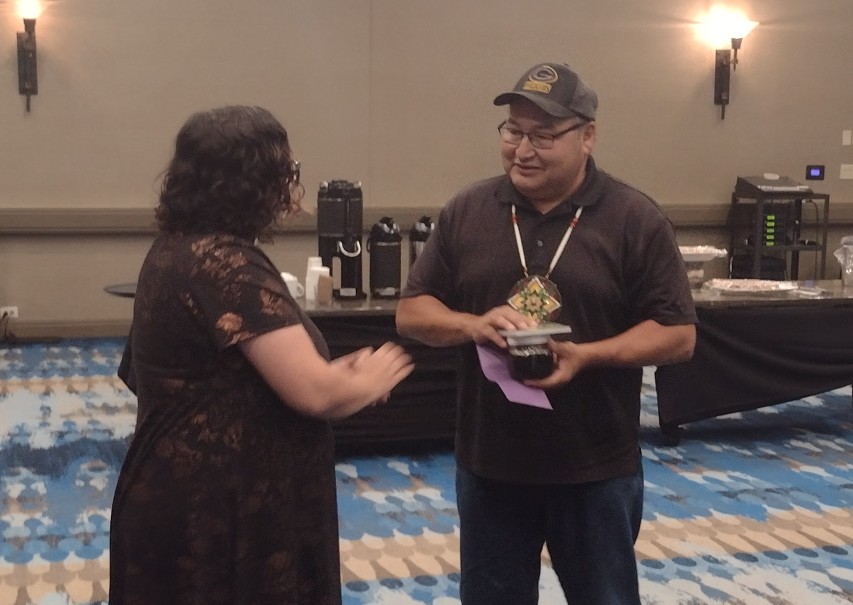
The Wisconsin Inter-Tribal Repatriation Committee includes tribal historic preservation officers from other tribes in the state and their work includes efforts to repatriate artifacts to Indigenous nations from individuals and state museums and preserving historic sites, such as effigy mounds.
“We all come from the same source,” Quackenbush said. “We all have a creator. All of this (land acknowledgments and donations) is symbolic of a healing process, but also a step forward. … The tribes can’t do it alone. We need state agencies and other organizations. What drives everything is the almighty dollar.”
The check was presented in a purple envelope, which Parker said is the color of repentance.
“We acknowledge that our ability to worship on Ho-Chunk land came at a great cost to those people,” Hassett said at the meeting.
Much discussion was had at the meeting about the Doctrine of Discovery, which was a series of papal bulls from the Middle Ages from the Vatican that essentially permitted Christian European nations to subjugate and spread forced Christianity on Indigenous peoples in the Americas and Africa.
Indigenous advocates maintain that this doctrine was never rescinded by the Catholic Church.
The Catholic Dioceses of Milwaukee, Green Bay and La Crosse are “observers,” not full members, of the Wisconsin Council of Churches, but Parker said the idea of the Doctrine of Discovery is ingrained in Western thought.
“The Doctrine has become the foundation of people’s understanding relative to North America and its original inhabitants,” she said. “The settlers had a sense of understanding that their mission was for God and king. That understanding has become part of our psyche. It’s ingrained in our laws and was part of the idea of Manifest Destiny. It’s not just history, but still happening today.”
“This is something we owe.”
Importantly, the aspect of this $4,000 voluntary land tax payment that Hassett and her congregation wanted to be most worked on is how it could be more than just a one-time gift or single act of reparation. The decision to structure it as a voluntary land tax and part of the church’s annual budget was a way for St. Dunstan’s to truly integrate a philosophy of accountability.
“We intentionally put it with our buildings and land expenses, with the other expenses related to owning our property,” Hassett said. “This isn’t an outreach donation, because we also have outreach stuff in our budget. We have money we give away to organizations that are doing good in the community. This is different from that. This isn’t from our charity, or generosity. This is something we owe. That was important to me.”
The voluntary land tax is just one piece of what Reverend Hassett sees as a multitude of ways in which work can be done to help mend a history that has seen Indigenous people subjugated and erased from social recognition. Bringing the congregation of St. Dunstan’s together in this plan of action required something that Reverend Hassett spoke to as a crucial step in the process, education.
“We know it’d be presumptuous to try to have a new Native best friend,” Hassett said. “That’s not what we’re trying to do. We want to be allies in the sense that, we’re going to observe Treaty Day in some way, we’re going to try to mark Missing and Murdered Indigenous Women’s Day, and when there’s an issue to protest or a legislative issue that’s important to the tribes, we’re going to pay attention, show up for that, and lend our voices. We’re trying to figure out how to be allies in the sense of whatever modest amount we can. We’re not a big congregation, but whatever modest amount of presence, effort, and voice we can offer, we’ll offer it as allies.”
One way this fight to give back, lend allyship, and educate people has manifested is through #TeachTheTruthWisconsin. Teach The Truth Wisconsin is part of the Wisconsin Council of Churches’ effort to educate around and center a history of the United States of America that includes how structural issues such racism, sexism, and marginalization of Indigenous peoples have shaped the country and the effect they still have on society today.
“We’re encouraging people to make videos, have community events, or anything that helps people understand how vital it is that we tell these stories and rehearse these histories,” said Parker of the WCC. “In a time when there are movements that say, ‘That’s hurtful, or that makes people feel bad,’ it’s really important that we understand the truth and the difficult histories that are part of our legacy here in the United States.”
Pieces of history that shine a light on the experiences and struggles of marginalized people provide material to be reflected on so that current issues and social movements can be understood and action can be taken to mend past injustices. Learning about how history is not at all far removed from issues marginalized people and communities face today is the spark that Reverend Hassett and Reverend Parker hope ignites endless possibilities.
“I think about this event, this moment of possibility, as an example of instigating holy imagination in people,” Parker said. “Look at this thing that this church did. I wonder what we could do. Maybe we don’t have thousands of dollars available, or maybe we don’t know enough yet. However, maybe we could talk to Mr. Quackenbush, or maybe we have a few $100 we could donate to the cause. Wondering what the history of the land we’re on is. Every piece of that is a baby step.”
When it comes to St. Dunstan’s Episcopal Church, it started with learning a history of the land that goes deeper than the Bavarian farmers who settled in the area during the mid-1800s.
“I hope seeing this will leverage other organizations to do some of this thinking and to look into what they can do,” said Rev. Miranda Hassett. “That is my hope. I think it’s important and worthwhile. I think a lot more predominantly white organizations are thinking about Native American issues. There’s a lot more talk about it now than there was two years ago…It’s easy to accept the history that started in the 1850s when the white people showed up. We’re conditioned to read a lot of history like that. I think the more we can notice where history starts, the way people show, and broaden the questions we’re asking and stories we’re telling, the better.”
Although the history of St. Dunstan’s site may be best known by the recounting and records of the European inhabitants on the land, the lesser known history of the Indigenous people who inhabited the land prior is written into the land itself. Acknowledging that history and holding it to the same regard as the history after their removal is an effort Reverend Hassett and the congregation at St. Dunstan’s are constantly evolving.
“Making sure that not just the kids of the congregation, but the whole congregation, does some learning about the native peoples of our area,” Rev. Hassett said. “There’s actually an effigy mound really close to the church. It’s not on the church’s property now, it’s in the possession of the Wisconsin Archaeological Society. It was part of the original farmland for those Bavarian farmers in the 1850s. I have wondered whether it would be meaningful to help in the upkeep. Could we pay for a new plaque that is more reflective of how we talked about effigy mounds and native peoples now. I don’t know if that would be a meaningful gesture to the tribe, or if that’s just something we would want to do. There’s a lot of negotiation and exploration.”
In reflecting on the importance of history, Reverend Hassett considered the story of Ferdinand Heim, a son of the Bavaraian farmers who settled on land, and an article he wrote in 1937 that speaks on Indigenous peoples coming back to the area. Through that article, a tangible connection is made to understand how the presence of the Ho-Chunk people never truly left the area.
“This one long life, bridging those centuries, who in his childhood was hearing stories about the Ho-Chunk returning,” said Rev. Hassett. “Which the Ho-Chunk did. They were removed, but they kept coming back to their ancestral homelands to care for their ancestor’s graves and engage in the historical ecological practices of their people. Eventually, they were able to buy land and really reestablish a stake in Wisconsin, which is amazing.”
Although past relationships with Indigenous peoples and communities may have been built off of ignorance and erasure, this step forward in the right direction marks a precedent and a reconsideration of what part organizations who have benefitted from Indigenous removal and subjugation can play in making amends in the present. Reverend Kerri Parker’s closing comment came in the same vein that history carries into the present, so the issues themselves must be faced in the present.
“We like to think of ourselves as an organization that has skill in holding relationships and equipping people in organizations to do the work that they’re meant to do,” Parker said. “Our hope is not to do the work for people or churches, but to help them do it themselves.”






